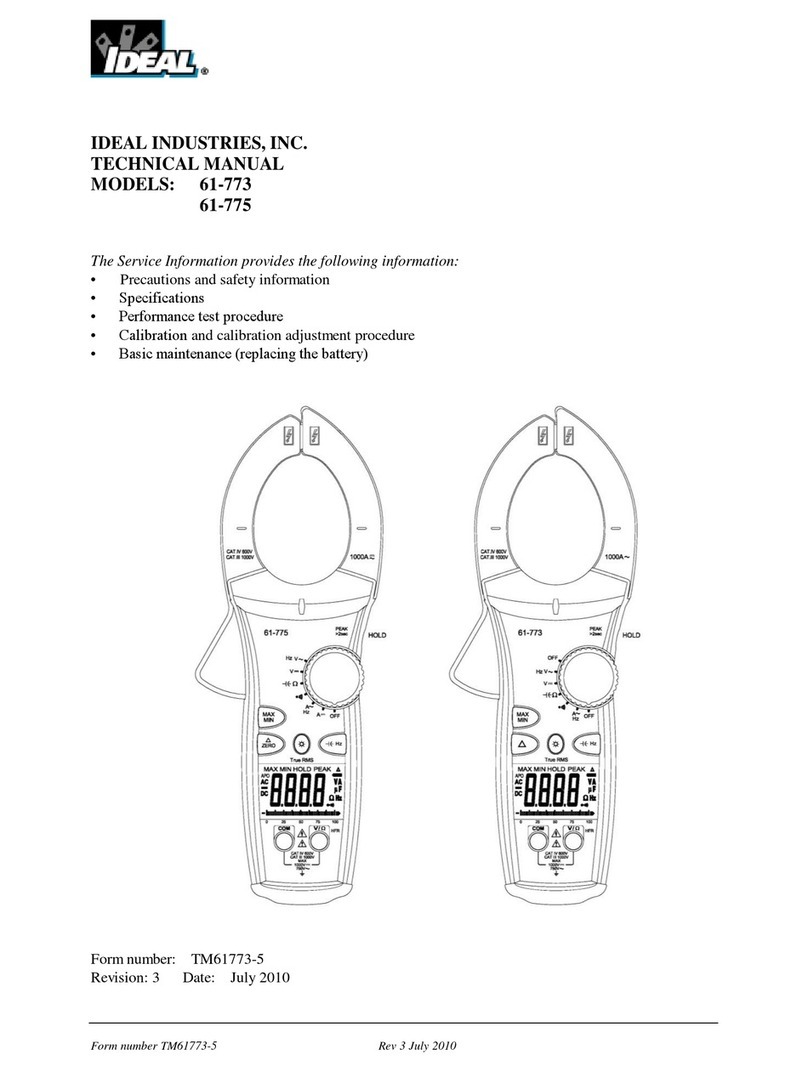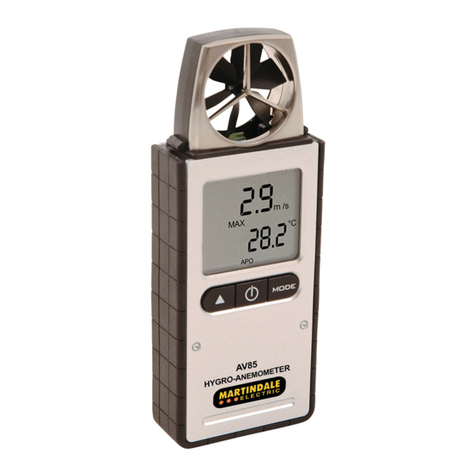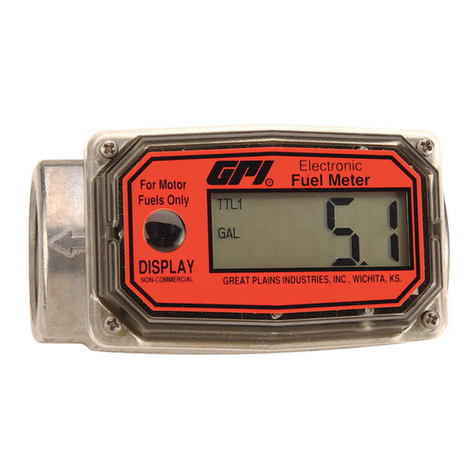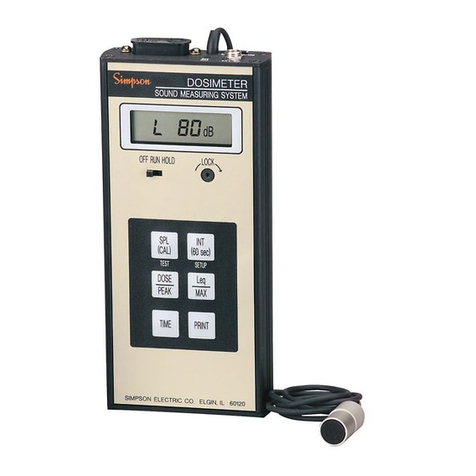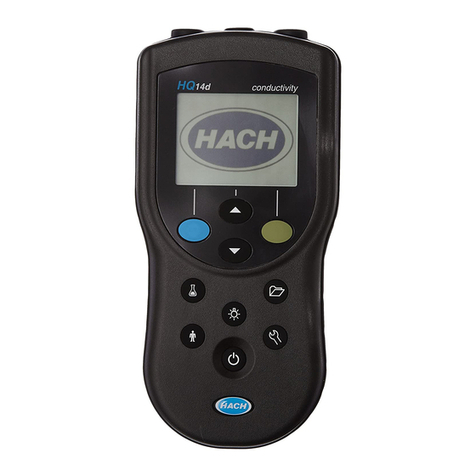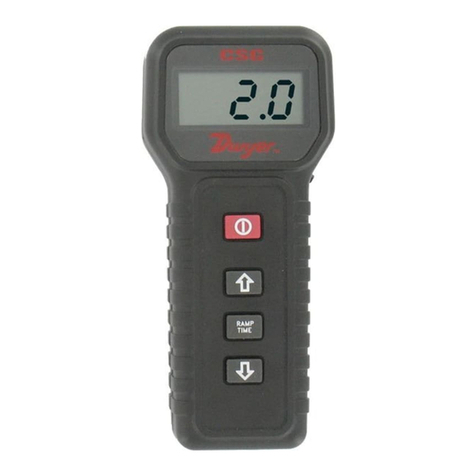Spacelabs Healthcare elance 5 User manual

Vital Signs Monitor
93300
Operations Manual
070-1963-00 Rev. M

Page ii élance Vital Signs Monitor Operations Manual
©2011 Spacelabs Healthcare, Ltd
All rights reserved. Contents of this publication may not be reproduced in any form without the
written permission of Spacelabs Healthcare. Products of Spacelabs Healthcare are covered by
U.S. and foreign patents and/or pending patents. Printed in U.S.A. Specifications and price
change privileges are reserved.
Spacelabs Healthcare considers itself responsible for the effects on safety, reliability and
performance of the equipment only if :
assembly operations, re-adjustments, modifications or repairs are carried out by
persons authorized by Spacelabs Healthcare, and
the electrical installation of the relevant room complies with the requirements of the
standard in force, and
the equipment is used in accordance with the operations manual.
Spacelabs Healthcare will make available, on request, such circuit diagrams, or component part
lists, descriptions, calibrating instructions or other information which will assist appropriately
qualified technical personnel to repair those parts of the equipment which are classified by
Spacelabs Healthcare as field repairable.
Spacelabs Healthcare is committed to providing comprehensive customer support beginning
with your initial inquiry through purchase, training, and service for the life of your Spacelabs
Healthcare equipment.
CORPORATE OFFICES
U.S.A
Spacelabs Healthcare, Inc.
5150 220th Ave SE
Issaquah, WA 98029
Telephone : 425-657-7200
Fax : 425-657-7212
Authorized EC Representative UNITED KINGDOM
Spacelabs Healthcare, Ltd.
1 Harforde Court
John Tate Road
Hertford, SG13 7NW
Hertfordshire, UK
Tel: + 44 (0) 1992 507709
Fax: + 44 (0) 1992 501213
élance is a trademark of Spacelabs Healthcare, Inc.
Other brands and product names are trademarks of their respective owners.
Caution:
Rx only US Federal law restricts the devices documented herein to sale by, or
on the order of, a physician.
Before use, carefully read the instructions, including all warnings and
cautions.

Table of Contents
élance Vital Signs Monitor Operations Manual Page iii
Contents Page
1élance Vital Signs Monitor.............................................................................................1-1
1.1 Intended Use .......................................................................................................................... 1-1
1.2 Indications for Use.................................................................................................................. 1-2
1.3 Equipment Classification ........................................................................................................1-2
1.4 Product Configurations........................................................................................................... 1-3
1.5 Features ................................................................................................................................. 1-4
1.5.1 Physical and Mechanical ............................................................................................ 1-4
1.5.2 Electrical......................................................................................................................1-4
1.5.3 Display ........................................................................................................................ 1-4
1.5.4 Touchscreen Keys ...................................................................................................... 1-5
1.5.5 Auxiliary Outputs......................................................................................................... 1-5
1.6 Safety Precautions ................................................................................................................. 1-5
1.6.1 Warnings ..................................................................................................................... 1-5
1.6.2 Cautions ...................................................................................................................... 1-7
2Introduction to the Monitor............................................................................................2-1
2.1 Physical Monitor Description .................................................................................................. 2-1
Side Views.............................................................................................................................. 2-2
2.1.1 External Connector Symbols ...................................................................................... 2-3
2.2 Software Interface .................................................................................................................. 2-4
2.2.1 The Waveform Area.................................................................................................... 2-4
2.2.2 The Numerical Area .................................................................................................... 2-5
2.2.3 The Patient Information Area ...................................................................................... 2-5
2.2.4 The Main Menu Area .................................................................................................. 2-6
2.2.5 Monitor Display Symbols ............................................................................................ 2-7
2.2.6 Colors..........................................................................................................................2-8
2.3 Monitor Controls ..................................................................................................................... 2-9
2.3.1 Setup Menu............................................................................................................... 2-10
2.3.2 Main Menu Control Windows .................................................................................... 2-11
2.3.3 Numerical Area Control Windows............................................................................. 2-11
2.3.4 Standby Mode........................................................................................................... 2-12
2.4 External Interface ................................................................................................................. 2-13
2.4.1 Alarm Relay Connection ........................................................................................... 2-13
3Using the Monitor ...........................................................................................................3-1
3.1 Powering on the Monitor ........................................................................................................ 3-1
3.2 General Monitor Settings........................................................................................................3-2
3.2.1 Set Date and Time ...................................................................................................... 3-2
3.2.2 Set Date and Time Format.......................................................................................... 3-4
3.2.3 Save User Defaults ..................................................................................................... 3-5
3.2.4 Restore User Defaults................................................................................................. 3-7
3.3 Waveform Settings ................................................................................................................. 3-8
3.3.1 Set Waveform Source................................................................................................. 3-9
3.3.2 Set Waveform Size ................................................................................................... 3-10
3.3.3 Set Sweep Speed ..................................................................................................... 3-10
3.3.4 Set Waveform Numbers............................................................................................ 3-11
3.3.5 Set ECG Cables Number.......................................................................................... 3-11
3.3.6 Set Waveform and Parameter Color......................................................................... 3-12
3.4 Display on Large Numeric Screen........................................................................................ 3-13
4Patient Management.......................................................................................................4-1
4.1 Admit/Edit Patient Information................................................................................................ 4-1
4.2 Discharge the Patient ............................................................................................................. 4-5

Table of Contents
élance Vital Signs Monitor Operations Manual Page iv
5Trends Management.......................................................................................................5-1
5.1 View and Print Tabular Trends............................................................................................... 5-1
5.1.1 View Tabular Trends at user-selectable period. ......................................................... 5-3
5.2 View and Print Graphical Trends............................................................................................ 5-4
6Managing Alarms............................................................................................................6-1
6.1 Alarm Limits............................................................................................................................ 6-2
6.1.1 Default Alarm Activation and Limits Setting................................................................ 6-2
6.1.2 Numerical Area Alarm Activation and Limits Setting .................................................. 6-3
6.2 Silence Alarm Mode ............................................................................................................... 6-5
6.2.1 Activate the Silence Alarm Mode................................................................................ 6-5
6.2.2 Set Silence Alarm Time .............................................................................................. 6-6
6.3 Alarm Suspend Mode............................................................................................................. 6-7
6.3.1 Activate/Deactivate the Suspend Mode...................................................................... 6-7
6.3.2 Set Alarm Suspend Time ............................................................................................ 6-8
6.4 Set Speaker Alarm Volume .................................................................................................... 6-9
6.5 Set Pulse Tone Volume........................................................................................................ 6-10
6.6 Activate/Deactivate SpO2Alarms Off Message ................................................................... 6-11
6.7 Alarm Validation ................................................................................................................... 6-12
6.8 Set Additional Alarm Time.................................................................................................... 6-13
6.9 Alarm Conditions .................................................................................................................. 6-14
6.10 Factory Default Parameter Ranges and Settings................................................................. 6-20
6.11 Alarm System Verification .................................................................................................... 6-23
7ECG and Heart Rate Monitoring....................................................................................7-1
7.1 Physical Setup Connections................................................................................................... 7-2
7.2 ECG Zone............................................................................................................................... 7-4
7.3 Getting into the ECG Setup.................................................................................................... 7-4
7.4 Set ECG Lead ........................................................................................................................ 7-5
7.5 Set Waveform Size................................................................................................................. 7-6
7.6 Set HR Source........................................................................................................................ 7-7
7.7 Set Pulse Tone Source .......................................................................................................... 7-8
7.8 Set ECG Filter ........................................................................................................................ 7-8
7.9 Set HR Alarm.......................................................................................................................... 7-9
7.10 Time to ECG Alarm ................................................................................................................ 7-9
7.11 Relearn ................................................................................................................................. 7-10
8ST Monitoring..................................................................................................................8-1
8.1 ST Alarm Settings .................................................................................................................. 8-2
8.2 ST Trends............................................................................................................................... 8-4
8.2.1 View and Print Tabular ST Trends.............................................................................. 8-4
8.2.2 View and Print Graphical ST Trends .......................................................................... 8-5
9Arrhythmia Analysis.......................................................................................................9-1
9.1 Arrhythmia Alarm.................................................................................................................... 9-1
9.2 Arrhythmia Review ................................................................................................................. 9-2
10 Respiration Monitoring ................................................................................................10-1
10.1 Physical Setup Connections................................................................................................. 10-1
10.2 RR Zone ............................................................................................................................... 10-2
10.3 Set RR Alarm........................................................................................................................ 10-2
10.4 Time to Respiration Alarm.................................................................................................... 10-3
11 EtCO2Monitoring..........................................................................................................11-1

Table of Contents
élance Vital Signs Monitor Operations Manual Page v
11.1 Activating/Deactivating EtCO2Waveform ............................................................................ 11-1
11.2 EtCO2 Zone.......................................................................................................................... 11-3
11.3 Getting into the EtCO2 Setup............................................................................................... 11-4
11.4 Set Waveform Size............................................................................................................... 11-4
11.5 Set EtCO2 Units ................................................................................................................... 11-5
11.6 Set EtCO2 Alarm.................................................................................................................. 11-5
11.7 Time to EtCO2 Alarm ........................................................................................................... 11-6
12 SpO2Monitoring............................................................................................................12-1
12.1 Physical Setup Connections................................................................................................. 12-3
12.2 Ensuring Accurate SpO2Monitoring..................................................................................... 12-3
12.3 SpO2Zone............................................................................................................................ 12-5
12.4 Getting into the SpO2Setup ................................................................................................. 12-6
12.5 Set HR Source...................................................................................................................... 12-7
12.6 Set Pulse Tone Source ........................................................................................................ 12-7
12.7 Set SpO2Alarm .................................................................................................................... 12-8
12.8 Advanced SpO2Features..................................................................................................... 12-8
12.8.1 Spacelabs Advanced SpO2....................................................................................... 12-8
12.8.2 Masimo SET (Signal Extraction Technology).......................................................... 12-10
12.8.2.1 Sensitivity Modes Setting....................................................................... 12-10
12.8.2.2 FastSat Settings and Data Averaging Settings...................................... 12-11
12.8.2.3 Signal IQ(SIQ)........................................................................................ 12-12
12.8.2.4 Perfusion Index (PI) ............................................................................... 12-12
12.8.3 Nellcor OxiMax........................................................................................................ 12-14
12.8.3.1 SatSeconds Indicator and numeric settings .......................................... 12-14
12.8.3.2 Response Mode Setting......................................................................... 12-16
12.8.3.3 No Pulse Alarm Setting .......................................................................... 12-17
12.8.3.4 Perfusion Index(PI) ................................................................................ 12-17
12.9 Time to SpO2Alarm............................................................................................................ 12-19
13 Invasive Blood Pressure (IBP) Monitoring.................................................................13-1
13.1 Physical Setup Connections................................................................................................. 13-1
13.2 IBP Zone............................................................................................................................... 13-2
13.3 Getting into the IBP Setup.................................................................................................... 13-2
13.4 Zero Set................................................................................................................................ 13-3
13.5 Set IBP Label........................................................................................................................ 13-4
13.6 Set IBP Format..................................................................................................................... 13-5
13.7 Set Waveform Size............................................................................................................... 13-6
13.8 Set Systolic Alarm ................................................................................................................ 13-6
13.9 Set Diastolic Alarm ............................................................................................................... 13-7
13.10 Set Mean Alarm.................................................................................................................... 13-7
13.11 Time to IBP Alarm ................................................................................................................ 13-8
14 Noninvasive Blood Pressure (NIBP) Monitoring........................................................14-1
14.1 Physical Setup Connections................................................................................................. 14-2
14.2 NIBP Zone ............................................................................................................................ 14-3
14.3 Getting into the NIBP Setup ................................................................................................. 14-4
14.4 Set NIBP Interval.................................................................................................................. 14-4
14.5 Set NIBP Format .................................................................................................................. 14-5
14.6 Set Initial Inflation Pressure.................................................................................................. 14-6
14.7 Set Systolic Alarm ................................................................................................................ 14-6
14.8 Set Diastolic Alarm ............................................................................................................... 14-7
14.9 Set Mean Alarm.................................................................................................................... 14-7
14.10 Time to NIBP Alarm.............................................................................................................. 14-8
14.11 NIBP Measurement Mode .................................................................................................... 14-8
14.11.1 NIBP Manual Mode .............................................................................................. 14-8
14.11.2 NIBP Automatic Mode .......................................................................................... 14-9

Table of Contents
élance Vital Signs Monitor Operations Manual Page vi
15 Temperature Monitoring ..............................................................................................15-1
15.1 Physical Setup Connections................................................................................................. 15-1
15.2 Temperature Zone................................................................................................................ 15-1
15.3 Getting into the Temperature Setup..................................................................................... 15-2
15.4 Set Units ............................................................................................................................... 15-2
15.5 Set Alarm and Limits ............................................................................................................ 15-3
15.6 Time to Temperature Alarm ................................................................................................. 15-3
16 Printing ..........................................................................................................................16-1
16.1 Loading Printer Paper .......................................................................................................... 16-1
16.2 Recorder Settings................................................................................................................. 16-2
16.3 Strip Chart Recordings ......................................................................................................... 16-3
16.4 Trend Recordings................................................................................................................. 16-4
16.5 Recorder Messages ............................................................................................................. 16-4
17 Battery Operation .........................................................................................................17-1
17.1 Operating On Battery Power ................................................................................................ 17-2
17.2 Battery Status ....................................................................................................................... 17-2
17.3 Charging the Battery ............................................................................................................ 17-3
17.4 Battery Replacement............................................................................................................ 17-3
18 Cleaning.........................................................................................................................18-1
18.1 Monitor, Cables, and Printers............................................................................................... 18-1
18.1.1 Cleaning/Disinfecting ................................................................................................ 18-2
18.1.2 Touchscreen Cleaning .............................................................................................. 18-2
18.2 Accessories .......................................................................................................................... 18-3
18.3 Noninvasive Blood Pressure Cuffs....................................................................................... 18-3
18.3.1 Cuff Cleaning and Disinfection.................................................................................. 18-3
19 Troubleshooting ...........................................................................................................19-1
19.1 Electromagnetic Interference (EMI): .................................................................................... 19-2
19.2 Obtaining Technical Assistance ........................................................................................... 19-3

1 élance Vital Signs Monitor
This manual describes the most common features and functions of the élance Vital
Signs Monitor.
Note:
Before use, carefully read this manual, directions for all accessories, all precautionary
information and specifications.
1.1 Intended Use
The Spacelabs élance Vital Signs Monitor is used to monitor the following parameters
for adult and pediatric patients. The monitor also supports printing as well as audible
and visual alarms for the parameters listed.
Electrocardiograph (ECG)
Heart rate/pulse rate (HR/PR)
Noninvasive blood pressure (NIBP, systolic, diastolic, and mean arterial
pressures)
Functional arterial oxygen saturation (SpO2)
Respiration rate (RR)
Dual temperature
Invasive blood pressure (IBP)
Capnography (EtCO2)
Caution:
US Federal law restricts the sale of this device to, or on the order of, a licensed
medical practitioner.
élance Vital Signs Monitor Operations Manual Page 1-1

élance Vital Signs Monitor
élance Vital Signs Monitor Operations Manual Page 1-2
1.2 Indications for Use
The élance Vital Signs Monitor is indicated for use in patient populations for:
Adult
Pediatric
The élance Vital Signs Monitor facilitates the monitoring of:
ECG
Respiration
Non-invasive blood pressures
Invasive blood pressures
Body temperature
Functional arterial oxygen saturation
Expired and/or inspired CO2.
The élance Vital Signs Monitor is a prescription device intended to be used by
healthcare professionals in all areas of a healthcare facility.
1.3 Equipment Classification
The élance Vital Signs Monitor with patient-applied parts is per EN 60601-1 – Class 1,
grounded, internally powered, Type CF defibrillator-proof.

élance Vital Signs Monitor
élance Vital Signs Monitor Operations Manual Page 1-3
1.4 Product Configurations
The élance Vital Signs Monitor 93300 may be configured with the following options:
Configuration Model Options Description
élance 5
5
93300 -05 10.2” display with Basic configuration, 4
waveforms
ECG, SpO2, NIBP, respiration, dual
temperature
élance 5
5i
i
93300 -05I 10.2” display with ECG, SpO2, NIBP,
respiration, dual temperature, dual IBP, 5
waveforms
élance 5
5c
c
93300 -05IC 10.2” display with ECG, SpO2, NIBP,
respiration, dual temperature, dual IBP,
EtCO2, 5 waveforms
élance 5
5
elite
93300 -05E 10.2” display, Black, with ECG, SpO2, NIBP,
respiration, dual temperature, 4 waveforms
élance
5
5i
i
elite
93300 -05IE 10.2” display, Black, with ECG, SpO2, NIBP,
respiration, dual temperature, dual IBP, 5
waveforms
élance
5
5c
c
elite
93300 -05ICE 10.2” display, Black, with ECG, SpO2, NIBP,
respiration, dual temperature, dual IBP,
EtCO2, 5 waveforms
élance 7
7
93300 -07
12.1” display with Basic configuration, 6
waveforms ECG, SpO2, NIBP, respiration,
dual temperature
élance 7
7i
i
93300 -07I 12.1” display with ECG, SpO2, NIBP,
respiration, dual temperature, dual IBP, 6
waveforms
élance 7
7c
c
93300 -07IC 12.1” display with ECG, SpO2, NIBP,
respiration, dual temperature, dual IBP,
EtCO2, 6 waveforms
élance 7
7
elite
93300 -07E 12.1” display, Black, with ECG, SpO2, NIBP,
respiration, dual temperature, 6 waveforms
élance
7
7i
i
elite
93300 -07IE 12.1” display, Black, with ECG, SpO2, NIBP,
respiration, dual temperature, dual IBP, 6
waveforms
élance
7
7c
c
elite
93300 -07ICE 12.1” display, Black, with ECG, SpO2, NIBP,
respiration, dual temperature, dual IBP,
EtCO2, 6 waveforms

élance Vital Signs Monitor
élance Vital Signs Monitor Operations Manual Page 1-4
1.5 Features
1.5.1 Physical and Mechanical
The élance Vital Signs Monitor is a lightweight, integrated vital signs monitor with a
10.2-inch or 12.1-inch wide-screen color thin-film-transistor (TFT) liquid crystal display
(LCD) using a resistive touchscreen. Different parameter configurations provide vital
signs monitoring for a large range of acuity. Configurable default settings provide
customized care for adult and pediatric patients.
Note: The élance Vital Signs Monitor must be installed on a desktop or wall mount.
Spacelabs provides a variety of mounting solutions for different applications. Refer to
Service Manual (P/N 070-1949-00) and datasheets for more information.
1.5.2 Electrical
The élance Vital Signs monitor is powered by either of the following options:
Alternating current (AC) power.
AC Input Voltage Range 100 – 240 V
AC Input Current 2-1 A
AC Input Frequency Range 50/60 Hz
Internal lithium ion (Li-Ion) battery.
Fully Charged Operation
1 Battery Up to 5 hours
The battery is continuously recharged when the élance Vital Signs Monitor is
connected to a power source.
The monitor is delivered with one Li-Ion battery. Refer to chapter on Battery
Operation for more information.
1.5.3 Display
The display is a widescreen color touchscreen LCD that shows:
Graphic and numeric patient information.
Status conditions
Warning messages.
The élance Vital Signs Monitor supports an easy one-touch display of patient vital
signs.

élance Vital Signs Monitor
élance Vital Signs Monitor Operations Manual Page 1-5
1.5.4 Touchscreen Keys
The élance Vital Signs Monitor uses touchscreen to execute monitoring functions.
Refer to the chapter on Using the Monitor for more information.
1.5.5 Auxiliary Outputs
The élance Vital Signs Monitor provides remote nurse alert, printing via serial
communication port, keyboard/mouse interface and software update via USB port.
1.6 Safety Precautions
This section contains important safety information related to general use of the élance
Vital Signs Monitor. Other important safety information appears throughout the
manual.
1.6.1 Warnings
General
Before use, carefully read the instructions, including all warnings and
cautions.
The ECG and IBP waveforms have a three second delay. This is
important to be aware of when conducting a procedure which requires
observation of real-time data to help prevent possible injury.
Inspect the monitor, sensor cables, and connectors before each use. Do
not use any equipment that appears damaged.
This equipment is not to be used on neonates or infants under 1 year old.
Do not apply excessive tension to any cable.
Electrical Shock Hazard; no user serviceable parts inside unit.
To avoid an explosion hazard, do not use the élance Vital Signs Monitor
in the presence of flammable anesthetics.
Use only hospital-grade grounded electrical outlets and power cords.
Do not connect grounding wire to gas pipes. This could cause a fire.
Only doctors and officially certified personnel should use this device.
Do not use the élance Vital Signs Monitor in areas with strong
electromagnetic fields (for example: Magnetic Resonance Imaging —
MRI).
The élance Vital Signs Monitor conforms to the requirements of the EMC
standard (IEC 60601-1-2:2001), and may be used simultaneously with
pacemakers and other electrical stimulators. The monitor may be
affected by electrosurgical and microwave therapeutic apparatus. Please
check the operation of the élance Vital Signs Monitor during and after
use of such equipment. Refer to the élance Vital Signs Monitor Service
Manual (P/N 070-1949-00) for more information.
Because of the potential for electromagnetic interference, electronic
devices (for example, portable communication transmitters, cellular

élance Vital Signs Monitor
élance Vital Signs Monitor Operations Manual Page 1-6
telephones, personal computers, electronic toys, and other medical
devices) should not be operated within 1.1 meters (3.5 feet) of the patient
leads or associated monitoring equipment until evaluated by the
biomedical staff.
Use only accessories approved by Spacelabs healthcare. For a list of
approved supplies and accessories, refer to the élance Vital Signs
Monitor Supplies and Accessories data sheet (P/N 061-2193-00). Other
cables, batteries, transducers and accessories may cause a safety
hazard.
To reduce the risk of electric shock, do not remove protective covers.
Do not use a power source other than the specified voltage (AC 100-240
V; 50/60 Hz) as this may cause fire or electric shock.
This equipment is protected against the discharge of a defibrillator.
However, do not touch this device when a defibrillator is being
discharged (electrified), as doing so may cause electric shock.
The élance Vital Signs Monitor should only connect with other 60601-1 or
60950 equipment.
−Ensure that the connected equipment is in accordance with the IEC
60601-1 or equivalent safety standards.
−Employ additional protective measures (e.g. additional protective
earthing/ isolation transformers) as necessary.
Do not connect devices that do not meet medical safety standards (such
as commercial personal computers), as they may cause electric shock.
This device meets the restricted level of leakage current required for
medical devices. Therefore, this device cannot be connected to a device
that would give a combined total of leakage current beyond the restricted
level.
Do not place anything on top of this device. If liquid accidentally spills on
the equipment, disconnect the power cord from the power supply and
have the equipment serviced by an authorized Spacelabs Healthcare
Service Representative.
Do not place heavy objects on the power cord, as doing so may cause
fire or electric shock.
Always disconnect the instrument from the power supply prior to
cleaning the system or performing maintenance work.
Connect only one patient to a monitor at a time.
Visually inspect all patient cables or sensors each time the unit is used.
Check for worn or damaged plastic covering, frayed or broken wires,
cracked connections, or any other signs of damage. Do not use cables or
sensors that exhibit obvious damage.
If the equipment is dropped, abused, or damaged in any way (for example,
if the élance Vital Signs Monitor becomes wet), a qualified Spacelabs
healthcare Service Representative or biomedical engineer must verify
that the unit is working correctly and that all safety features are intact.
Use only Spacelabs healthcare parts and accessories with your
Spacelabs healthcare products. Other parts and accessories may
compromise patient and operator safety, and degrade performance or
damage components.
If the lead wire or lead cable, cuff or hose cable, or sensor and probe are
not connected firmly, the élance Vital Signs Monitor may lose signal from
the patient.

élance Vital Signs Monitor
élance Vital Signs Monitor Operations Manual Page 1-7
Alarms
Alarms may be delayed in certain circumstances. See time to alarm
sections in individual parameter chapters.
Alarm conditions for which you want to be alerted must be set to ON or
enabled.
To protect the patient’s safety, do not silence, suspend, or disable
audible alarms without providing continuous, direct observation of the
patient.
Disabling alarm tones at a monitor eliminates alarm tones for all alarm
conditions at that monitor, even in the case of life-threatening events.
Note: Refer to the élance Vital Signs Monitor Supplies and Accessories data sheet
(P/N 061-2193-00) for the part numbers and descriptions of additional parts
and accessories.
Electrodes, Lead Wires, Sensors, and Sensor Cables
Carefully route all cables between the patient and the monitor to reduce
the possibility of patient entanglement or strangulation.
Signals resulting from devices such as Implantable Cardiac Defibrillators
(ICD) may momentarily blank the ECG waveform rather than display an
out-of-range signal. In such cases it may not be apparent that the ICD
has triggered and the condition of the patient should be checked. In all
instances of the ICD being triggered, the monitor will redisplay the ECG
waveform within five seconds.
Use only ECG monitoring cables and safety lead wires designed to
protect against accidental connection to electrical power cords or outlets.
Failure to do so may result in adverse health consequences or death.
To ensure against any possibility of electric shock, do not touch lead
electrodes or the monitor during defibrillation.
Defibrillators and Pacemakers
ECG detection circuitry may continue to count the pacing rate during
occurrences of cardiac arrest or some arrhythmias. Do not rely entirely
upon ECG rate alarms. Keep patients with pacemakers under close
surveillance.
Use the pacemaker manufacturer's performance analyzer as the primary
means of evaluating pacemaker operation.
While pacemakers are being programmed, the programming device may
suppress the ECG waveform, preventing QRS detection and rate
counting. This may result in an erroneous asystole alarm.
1.6.2 Cautions
The élance Vital Signs Monitor may not operate properly if it is stored, or
operated, at conditions outside the ranges stated in this manual or
datasheets, or if the monitor is subjected to excessive mechanical shock.
When connecting the élance Vital Signs Monitor to any instrument, verify
proper operation before clinical use. Both the élance Vital Signs Monitor
and the instrument must be connected to a grounded outlet.
Accessory equipment connected to the élance Vital Signs Monitor's data
interface must be certified according to IEC 60601-1 for electromedical
equipment or IEC 60950 for data-processing equipment. All

élance Vital Signs Monitor
élance Vital Signs Monitor Operations Manual Page 1-8
combinations of equipment must be in compliance with IEC 60601-1-1
system requirements.
There is a risk of explosion if the battery is replaced by an incorrect type.
If the integrity of the external protective earth conductor is in doubt, the
élance Vital Signs Monitor must be operated from its internal power
source.
This equipment generates, uses, and can radiate radio frequency energy
and, if not installed and used in accordance with the instructions, may
cause harmful interference with other devices in the vicinity. If this
equipment does cause harmful interference to other devices, you are
encouraged to try to correct the interference by one or more of the
following measures.
−Reorient or relocate the receiving device.
−Increase the separation between the equipment.
−Connect the equipment into an outlet on a circuit different from that
to which the other device(s) are connected.
−Refer to the EMC Appendix to the Service Manual
−Consult the élance Vital Signs Monitor Service Manual (P/N
070-1949-00) or your Spacelabs Healthcare Service Representative
for help.
There may be situation where other bedside device/fixture may generate
electrical interference when there is grounding issue, thus causing ECG
artifact at the monitor as it is in the closest proximity of patient. When
such event happens, hospital should have this grounding issue fixed
with the supplier of the interfering device/fixture. One possible solution
is to ensure equipotential grounding is achieved between the interfering
device/fixture and the monitor to eliminate the build up of electrical
interference on the enclosure and metal chassis.

2 Introduction to the Monitor
This chapter introduces the élance Vital Signs Monitor including all external
connections, display symbols, and colors used on the display to indicate the different
functions and messages. The monitor also provides an external interface to support
an alarm relay connection.
2.1 Physical Monitor Description
élance Vital Signs Monitor
élance Vital Signs Monitor rear view
élance Vital Signs Monitor Operations Manual Page 2-1

Introduction to the Monitor
élance Vital Signs Monitor Operations Manual Page 2-2
Side Views
élance Vital Signs Monitor external connections are
located on the right side of the monitor.
NIBP
ECG
SpO2
T1
T2
IBP1 (optional)
IBP2 (optional)
CO2 (optional)
élance Vital Signs Monitor left side view
For Recorder attachment (optional)

Introduction to the Monitor
élance Vital Signs Monitor Operations Manual Page 2-3
2.1.1 External Connector Symbols
Symbol Description Symbol Description
Power Button Date of Manufacture
Universal Serial Bus Network Connector
ECG ECG Connector Alarm Relay Connection
IBP IBP Connector
Attention, Consult Accompanying
Documents
SpO2
Spacelabs SpO2Connector
Degree of Protection from Liquid
Ingress
SpO2
Masimo SpO2Connector AC Power Input Rating
SpO2
Nellcor SpO2Connector CE Mark — conforms to EU
medical device directive
NIBP Noninvasive Blood Pressure Canadian Standards Association
Approved(NIBP) Connector
CO2 EtCO2 Connector Altitude
CO2 Gas In/Out
Moisture
T1 Temperature 1 Temperature Range
Not for use on neonat
T2 Temperature 2 es or infants
under 1 year old
IEC 60601-1 Type CF
equipment. The unit
ated
d part
displaying this symbol
contains an F-type isol
(floating) patient-applie
providing a high degree of
protection against electric
shock, and is
defibrillator-proof.
This symbol indicates that the
waste of electrical and electronic
d
missioning
equipment must not be dispose
as unsorted municipal waste and
must be collected separately.
Please contact an authorized
representative of the
manufacturer for information
concerning the decom
of your equipment.
Read the instructions before
use

Introduction to the Monitor
élance Vital Signs Monitor Operations Manual Page 2-4
2.2 Software Interface
The élance Vital Signs Monitor shown below is made up of four distinct areas.
The Waveform Area
The Numerical Area
The Patient Information Area
The Main Menu Area.
2.2.1 The Waveform Area
The élance Vital Signs Monitor has four or five equally sized waveform areas
depending on your purchased monitor configuration.

Introduction to the Monitor
élance Vital Signs Monitor Operations Manual Page 2-5
ending
n options purchased:
2.2.2 The Numerical Area
The élance Vital Signs Monitor has six or seven numerical reading controls dep
o
ECG (HR)
RR (Respiration)
SpO2
IBP1
IBP2
NIBP
Temperature
2.2.3 The Patient Information Area
This area displays the patient information.

Introduction to the Monitor
élance Vital Signs Monitor Operations Manual Page 2-6
2.2.4 The Main Menu Area
you to perform specific functions of the élance Vital Signs
onitor.
The Main Menu enables
M
The Main Menu has the following keys:
E NUMERIC – Display param c display.
p Menu
NIBP measurement,
AUDIO– Silence activated alarms
STANDBY – Puts the élance Vital Signs Monitor on standby mode
RECORD – prints measured data to a printer (if installed)
TRENDS – Display, clear and print trends (Opens a window)
LARG eters in large numeri
MONITOR SETUP –Access the Setu
NIBP/STOP NIBP – starts or stops
NORMAL SCREEN –Close any opened window. It has the same effect as the OK
button if the window is at any setting status before closed.
This manual suits for next models
12
Table of contents
Popular Measuring Instrument manuals by other brands

Steren
Steren AUT-030 instruction manual
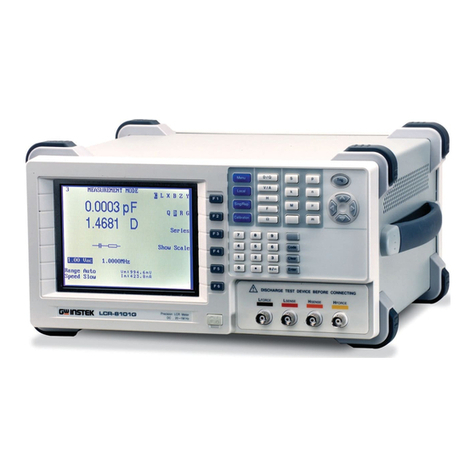
GW Instek
GW Instek LCR-8101G user manual
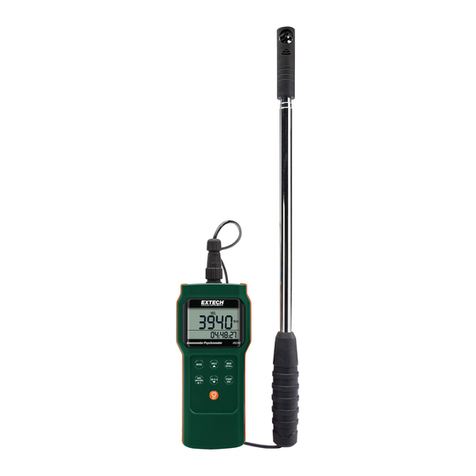
Extech Instruments
Extech Instruments AN340 user guide
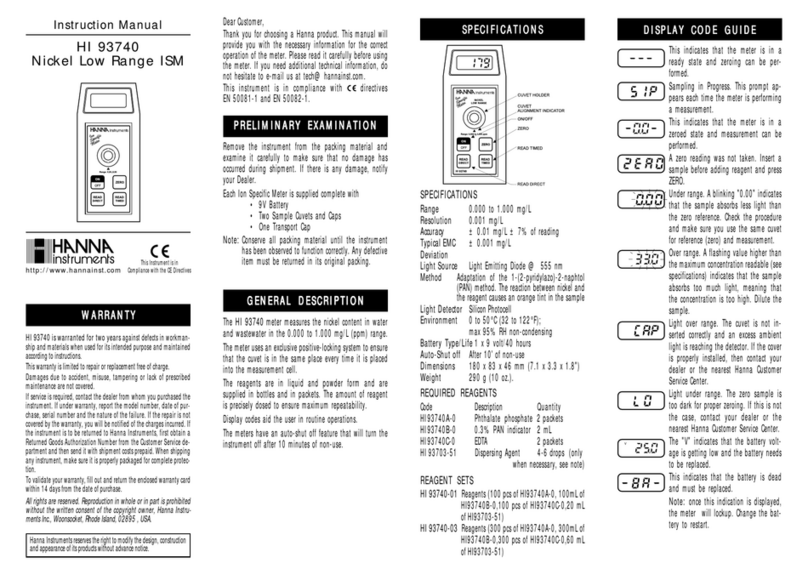
Hanna Instruments
Hanna Instruments HI 93740 instruction manual

Bosch
Bosch GLM 500 Professional Original instructions
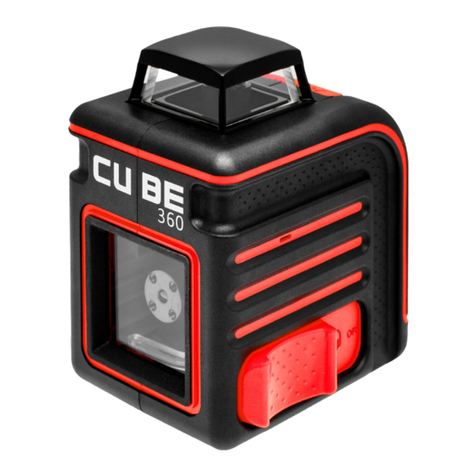
ADA INSTRUMENTS
ADA INSTRUMENTS CUBE 360 operating manual



